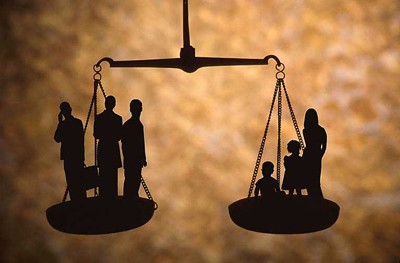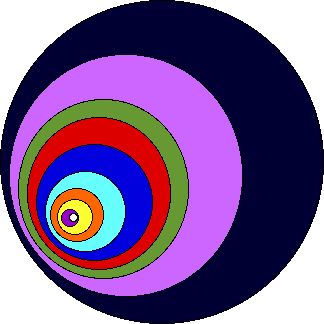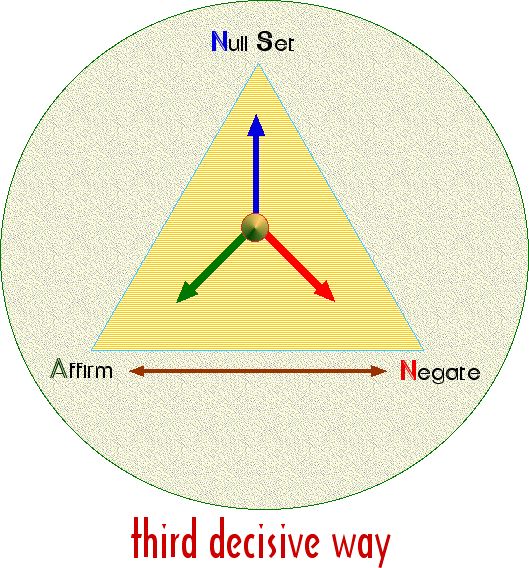
Eco-justice defined
What
is justice? defining a
word.
suggested steps to promote a more just society
Culture
As ways to see real things.
Neil Postman: Amusing Ourselves
What
are the facts?
Overview of the contents.
chapter
guide:
her argument
Terms to know:
Ten lessons of Postman & Sontag:

Ideas on this site
How do I promote a more just society?
 "That the poor are invisible is one of the most important things about them. They are not simply neglected and forgotten as in the old rhetoric of reform; what is much worse, they are not seen."
"That the poor are invisible is one of the most important things about them. They are not simply neglected and forgotten as in the old rhetoric of reform; what is much worse, they are not seen."
Michael Harrington
John Dewey on education, equity, social justice, consilience
weeks | Thomas Paine | Siry | Course description,
"Eco-Justice education is an approach that analyzes the increasing destruction of the world’s diverse ecosystems, languages and cultures by the globalizing and ethnocentric forces of Western consumer culture. Eco-Justice scholars and educators also study, support and teach about the ways that various cultures around the world actively resist these colonizing forces by protecting and revitalizing their commons, that is the social practices and traditions, languages, and relationships with the land necessary to the sustainability of their communities."
"Social justice" is a form of civil rights activism born of the eighteenth century belief that:
"All men and women are created equal, and endowed . . .with certain inalienable rights."
A. God given, granted or rights by grace
B. common obligations & privileges due to birth
Thomas Jefferson, The Declaration of Independence, 1776.
Thomas Paine, (1737-1809).
N the following pages I offer nothing more than simple facts, plain arguments, and common sense; and have no other preliminaries to settle with the reader, than that he will divest himself of prejudice and prepossession, and suffer his reason and his feelings to determine for themselves; that he will put on, or rather that he will not put off, the true character of a man, and generously enlarge his views beyond the present day.
Alas, we have been long led away by ancient prejudices, and made large sacrifices to superstition."
Common Sense, 1776. Chapter three.
I likewise mentioned the necessity of a large and equal representation; and there is no political matter which more deserves our attention. A small number of electors, or a small number of representatives, are equally dangerous. But if the number of the representatives be not only small, but unequal, the danger is increased. As an instance of this, I mention the following; when the Associators petition was before the House of Assembly of Pennsylvania; twenty-eight members only were present, all the Bucks county members, being eight, voted against it, and had seven of the Chester members done the same, this whole province had been governed by two counties only, and this danger it is always exposed to. The unwarrantable stretch likewise, which that house made in their last sitting, to gain an undue authority over the Delegates of that province, ought to warn the people at large, how they trust power out of their own hands. A set of instructions for the Delegates were put together, which in point of sense and business would have dishonored a schoolboy, and after being approved by a few, a very few without doors, were carried into the House, and there passed in behalf of the whole colony; whereas, did the whole colony know, with what ill-will that House hath entered on some necessary public measures, they would not hesitate a moment to think them unworthy of such a trust."
Common Sense, 1776. Chapter four.
Neil Postman: Amusing Ourselves to Death
Susan Sontag: On the Pain of Others
William Greider, Come Home, America
George Lakoff, The Political Mind
"We hold these truths to be self evident that all men are created equal and endowed by their creator with life, liberty, and the pursuit of happiness."
Declaration of Independence
"All persons born or naturalized in the United States are citizens of the United States and the state wherein they reside."
Amendment Five of the Constitution
Why a "Leadership in Ecological justice" class?
As described in three following paragraphs ecojustice is the apparent instructional need or pedagogical recognition that embedded in water, energy, land-use and land use change questions are matters of social justice.
There is no better field experience for students and faculty to learn in an urban laboratory the meaning, limits, and opportunities for ecojustice education than the recovery of New Orleans from the great Deluge of 2005. That is because here in the Mississippi delta ethnic prejudice, the problem of the commons, social inequality, gender inequity and the natural history of river mouths are entwined in a veritable “Gordian knot” of uncertainty hampering the recovery of homeowners and the renewal of these historical communities.
Such a course introduces students to the application of ecological ideas, policy considerations, and historical settings that act as constraints here and around the world and simultaneously engage participants in a critical test of the most effective sorts of responsible activism necessary to improve the lives of the disenfranchised.
The interdisciplinary character of the class will be organized around involving students in creating new institutions to carry out social justice work in the community.
CORE: Clarify - Organize - Reflect - Evaluate First in order to make changes in the world we define and identify an eco-justice problem you want to solve.
Think of two intersecting lines forming a cross, and picture the four quadrants thus created. Label one quadrant environmental policy, the next ethics, the next biology, and the final one social science.
E. O. Wilson, Consilience, p. 9.
 |
Specialties | |
|---|---|---|
| environmental policy | ethics | |
| social sciences | biology | |
Social and ecological justice lie at the intersection of these fields with ethics.
“We already intuitively think of these four domains as closely connected, so that rational inquiry in one informs reasoning in the other three. Yet undeniably each stands apart in the contemporary academic mind. Each has its own practitioners, language, modes of analysis and standards of validation. The result is confusion, and confusion was correctly identified by Francis Bacon four centuries ago as the most fatal of errors, which ‘occurs wherever argument or interference passes from one world of experience to another’.”
p. 9-10.
Next draw a series of concentric circles around the point of intersection.
“As we cross the circles inward toward the point at which the quadrants meet, we find ourselves in an increasingly unstable and disorienting region. The ring closest to the intersection [green, dotted line] where most real world problems exist, is one in which fundamental analysis is most needed. Yet virtually no maps exist. Few concepts and words serve to guide us. Only in imagination can we travel clockwise from the recognition of environmental problems and the need for soundly based policy; to the selection of solutions based on moral reasoning; to the biological foundations of that reasoning; to a grasp of the social institutions as the products of biology, environment, and history. And thence back to environmental policy.”
p. 10.
In this class, you and I, together study material at Wilson's intersection of disciplines or bodies of knowledge.
One: what justice is to "great abbreviators" -- Both big and small ways to define.
Two: what media does to ecology and justice. Focus and departure from the core.
Three: the assault of media on education and the eclipse of action by disinformation.
Organize
Select
a problem in eco-justice,
a case
and describe the facts.
Suggest solutions based on cases and related experiences.
Three: the assault of media on education and the eclipse of action by disinformation.
Each participant describes the urgency --based on a case study-- of solving this problem and its elements to one another in the class and proposes a session for a Forum on Social Justice held in late October or early November.
From the suggestions of topics (see syllabus) addressing eco-justice the class plans, participates in, promotes and performs in the successful presentation of a social justice forum.
Status
quo
Those who bear the disproportionate burdens are not those who reap the
rewards of the existing situation.
Notice that water, energy, land use and land if you tall the initials spells - WELL; in the sense that we must our work well together to improve the world.
Environmental Justice Professor Robert Bullard
An important segment of the course focuses on the conditions that conspired to create urban disasters. We compare New Orleans and San Francisco case studies that require you to look at additional material before coming to class. Although Galveston and Charleston suffered hurricane destruction and Chicago, New York City, Atlanta and Washington, D. C. have all been devastated by fires, we do focus on these social disasters:
The great Mississippi River Flood of 1926-1927. This "flood took the lives of thousands, made refugees of hundreds of thousands, and caused vast destruction." according to the U special collections librarians.
Fatal Flood focuses on the devastating impact the flood wrought on the Delta community of Greenville, Mississippi, though valley-wide 27,000 square miles were affected. See: The Fatal Flood
Short silent film produced by the Signal Corps of the Mississippi flood of 1927.

The class participants evaluate Social Justice Forum’s speakers, presenters, workshops and reviews of the audience comments so that they can propose institutions to further the goals of what they learned at the forum.
That organization will consist of the following steps each week and month:
weeks
- One: what justice is to "great abbreviators" -- Both big and small ways to define.
- Two: what media does to ecology and justice. Focus and departure from the core.
- Three: the assault of media on education and the eclipse of action by disinformation.
- Four: Postman
- Five: Sontag
- Six: Mid-term essay on Postman Sontag & Rose
- Seven: social stratification
- Eight: Justice related to Postman
- Nine: Journal entries
- Ten: Global Warming -- new findings
- Eleven: needed reforms -- commons define the problems of ecojustice
- Twelve: Dewey and education
- Thirteen: Water is "A Message in a Bottle."
- Fourteen: Farm workers
Living downstream: an ecological look at cancer.
Taking action incurs many risks.
Influence of famine on genes and epigenesis.
Susan Sontag, Regarding the Pain of Others
This was her last book, published in 2003 before her death in 2004.Neil Postman, Amusing Ourselves to Death.
Kathleen Parker on what constitutes news in the age of the internet: 8-1-08
Bowers, C. A. Educating for Ecojustice and Community. Athens, GA: University of Georgia Press, 2001.
John M. Bary. Rising Tide: The Great Mississippi Flood of 1927 and How It Changed America.
Edward O. Wilson. Consilience: The Unity of Knowledge. “The Great Branches of Learning,” Ch. 2, NYC: Vintage, 1999.
Other related works
Shiva, Vandana. Water Wars: Privatization, Pollution and Profit. Cambridge, MA: South End Press, 2002.
Jackson, Wes. Altars of Unhewn Stone: Science and the Earth. San Francisco, Calif.: North Point Press.
Date: September 22. 2010
equity | social justice | consilience | weeks| Thomas Paine | Siry | Harrington









